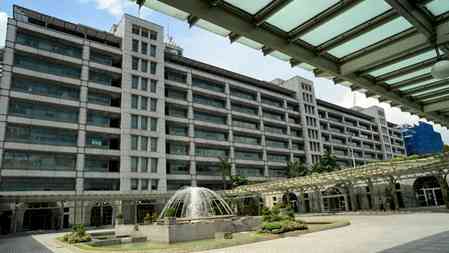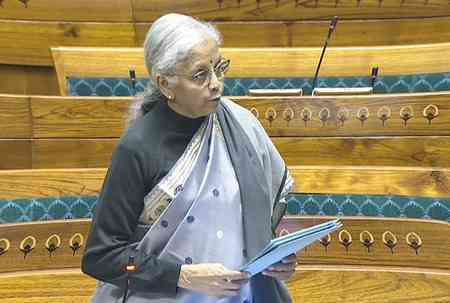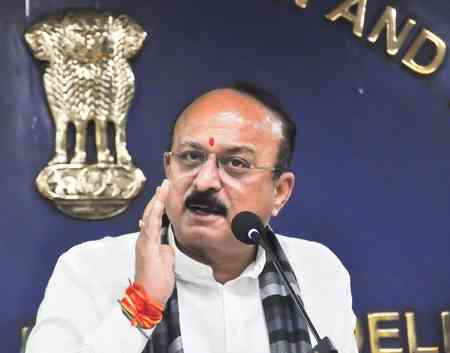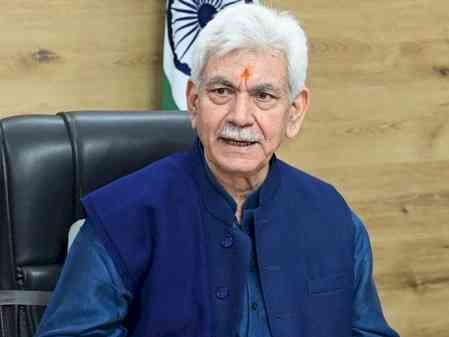Viksit Maharashtra 2047: State govt sets an ambitious target of building $5 trillion economy
The BJP led government in Maharashtra has set an ambitious target of building a $5 trillion economy by 2047 from the present level of over $530 billion economy by ensuring regional economic balance, equitable sectoral growth enabled by productivity gains, accelerating industrial growth, facilitating job creation and improving performance across Sustainable Development Goal indicators.
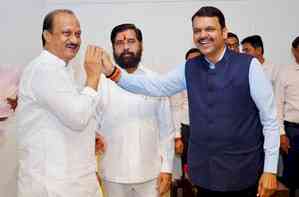
Sanjay Jog
Mumbai, Oct 29 (IANS) The BJP led government in Maharashtra has set an ambitious target of building a $5 trillion economy by 2047 from the present level of over $530 billion economy by ensuring regional economic balance, equitable sectoral growth enabled by productivity gains, accelerating industrial growth, facilitating job creation and improving performance across Sustainable Development Goal indicators.
According to the vision document for Viksit Maharashtra 2047 cleared by the state cabinet on Tuesday, Maharashtra envisions to continue to be a cornerstone of India’s Viksit Bharat journey guided by its vision for 2047.
The vision document focusses on 16 sectors including agriculture and allied sectors and rural development, industries, services, tourism, urban development, energy and sustainability, water, transport and logistics, education and spilling, health, welfare, soft power, governance, technology, security and finance.
Chief Minister Devendra Fadnavis said, “The vision document has been prepared in three phases: Short-term vision of October 2, 2029 (with annual targets), medium-term vision of May 1, 2035 (Maharashtra @ 75) and long-term vision of August 15, 2047 (India @ 100).”
According to the vision document, Maharashtra aspires to increase its agricultural GDP from $55 billion to $500 billion (10 per cent CAGR) attracting investments of $700 billion. This will be enabled by seven initiatives which include to create 10-15 integrated crop value chains, increase aqua culture output to 6 MMT, develop 1000 livestock development centres and equip rural areas with city-like civic amenities.
Maharashtra aims to increase its industrial GDP from $123 billion to $1,500 billion (11 per cent CAGR) attracting investments of $4,600 billion.
This will be achieved through development of 20 plus autonomous industrial townships, integration of value chains for 24 high profile sectors, undertaking drastic deregulation, building an enabling ecosystem for MSMEs, innovation and sustainability.
The state aspires to increase its services GDP from $312 billion to $3000 billion (10 per cent CAGR) attracting investments of $8500 billion. This will be enabled by transformation of Mumbai Metropolitan Region (MMR) into a $600 billion plus global fintech hub and Mumbai and Pune into a $50 billion plus media tech AVGC hub, development of an innovation city, deep tech AI ecosystem with 9-10 translational Center of Excellences (CoEs), Global Capability Centre (GCC) parks and data centres.
In tourism sector, Maharashtra aims to increase the tourist footfall from 16 crore to 38 crore plus by laying focus on the development of five end-to-end tourism circuits, promotion of sustainable/responsible tourism, launching of a global marketing campaign and attracting private investments to develop destinations in a mission mode.
Amid rising urbanisation, the state government has projected Maharashtra to have 70 per cent urban population from the present 45 per cent plus, contributing to 75-80 per cent of the state's GDP. To ensure growth, liveability and sustainability, the state will undertake creation of 10 plus empowered regional development authorities, strengthening fiscal autonomy for urban local bodies, development of 50 plus mixed use clusters and 6 to 7 million affordable housing units.
The state, in a bid to contribute to the Centre’s net zero vision, aims to attain 75 per cent clean energy mix offering reliable power at globally-competitive prices, reducing the aggregate technical and commercial losses to 8 per cent. This will be achieved by increasing investments in renewable energy, modernisation of the grid for flexibility and resilience and leading in nuclear energy. The state government expects Maharashtra to attain 33 per cent green cover and scale decarbonisation, green mobility and circularity.
In water sector, the state endeavours for water availability of more than 55 Litres Per Capita Per Day (LPCD) in rural areas, more than 135 LPCD in urban areas, 65 per cent gross irrigated area and 80 per cent water reuse. This will be achieved through integration of water resource management, enhancement of water use efficiency via micro irrigation, modernisation of storage and digitisation of supply chain.
In the case of transport sector, the state government aims for seamless multimodal connectivity for passengers and freight. This will be achieved through development of 6,000 km plus expressway network, 4-6 additional connections of dedicated freight corridors and high speed rail networks. The state government aims to scale containerised port capacity to handle 25-30 per cent of India’s trade and integrate logistics planning.
To ensure effective governance, the state government will establish Maharashtra Vision Management Unit (VMU) headed by the chief minister. The VMU will ensure that the vision document will serve as the guide for all future policies and endeavours of the state.
(Sanjay Jog can be contacted at [email protected])
--IANS
sj/rad


 IANS
IANS 
